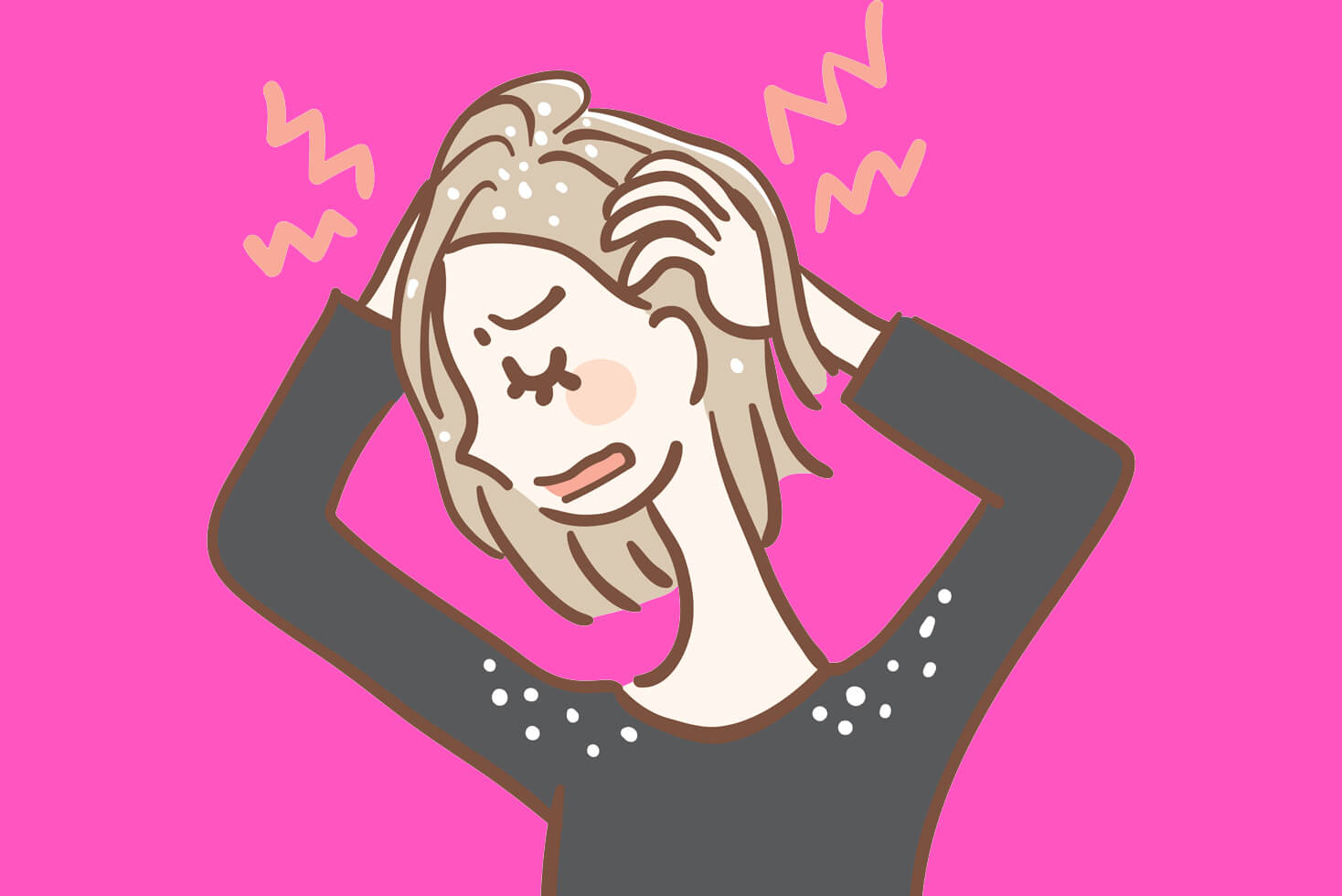How to Prevent Your Scalp from Itching After Hair Coloring
Updated on
This post may contain affiliate links. As an Amazon Associate, we may earn from qualifying purchases.

Are you a hair chameleon who switches hair color every 2 months?
Then you probably know about that uncomfortable feeling when your scalp itches like crazy after hair coloring.
Even if you haven’t had this experience so far, it may happen after your next appointment.
Not that I’m jealous and wishing bad on you …
There’s been a few times when the hair dye didn’t agree with my scalp, which left me scratching like a mad woman.
Not to mention the odd 2-for-1 Groupon deals that turned out to be more painful than blissful. Ouchhh!!
Since then, I figured out why certain hair dyes make my scalp itch and better prepare for my color treatments.
Without further ado, let me share these useful tips with you.
5 Tips To Prevent Your Scalp From Itching After Coloring
You see, hair color treatments contain a gazillion of tong-twisting ingredients.
And most of them, very nasty chemicals.
If none of them irritate your scalp, then you’re one lucky B*tch!
But not all of us have a scalp made of steel.
Some of us mere mortals are pretty sensitive to these things, like Ammonia, Peroxides, and a very notorious ingredient called Para-phenylenediamine (PPD).
According to a study published in the Indian Dermatology Online Journal, PPD can cause contact dermatitis and skin sensitivity.
Sounds scary?
Yes. But even more scary is that PPD is found in almost all permanent and semi-permanent hair dyes.
Aside from itching or burning, PPD-based color treatments can also lead to flaking, dandruff, and long term skin sensitization.
So how do you avoid it?
Simple.
1. Do a Patch Test First
Before you dive in with both feet, do a patch test.
One of the most convenient places to test is behind your ear.
If the spot starts to itch, becomes red, or swell, you’ll know your skin doesn’t like some of the chemicals present in the hair dye.
Therefore, the best thing to do is to ABORT and look for an alternative plant-based organic hair dye that is chemical-free.
2. Use Hair Dyes for Sensitive Skin
Never assume that your scalp is NON-sensitive.
Always be on the cautious side. You won’t put these chemicals on your face, so why put them on your scalp!
Do your research before leaving for the salon and look for colors specifically made for sensitive skin.
What you need to look for is:
- Ammonia-free
- Peroxide-free
- PPD-free (Paraphenylenediamine-free)
You may also consider getting highlights rather than the whole thing. This would be a lot safer and still make your hair glam fabulous.
3. Be Honest with Your Colorist
If you’re having your hair colored in a salon, don’t be shy to tell your colorist to patch test first.
I would expect a hair colorist to perform this step anyway, but there are the odd ones who like to cut corners.
But in case he/she is trying to shortcut, make sure you shout out.
They’ve got the right tools to adjust to your needs.
If you experience any stinging sensations in the middle of coloring, immediately tell him/her.
Don’t just sit through it.
4. Embrace The Oils
Before dyeing your hair, don’t wash it.
You don’t want your natural protective oils to be stripped away. Instead, embrace the oils. It will protect your locks and scalp from direct contact with the chemicals.
Also, hydrate your hair well a few days before getting it treated. This way, your hair won’t be severely damaged.
Your scalp’s natural oils (sebum), work like a protective layer to stop the harsh chemicals from touching the skin.
5. Treat Your Scalp After Color Treatment
Moisture, moisture, moisture!
Your hair and scalp will be extremely dehydrated after a color treatment.
The chemicals in hair dyes cause an alkaline reaction that opens the hair cuticles to allow color pigments to set in.
High alkalinity is bad for your hair and skin.
So don’t let alkalinity (high pH) take over.
It will irritate and erode your scalp’s acid mantle, which protects against bacterial growth.
Your scalp itches after coloring because you’ve let these alkaline chemicals buildup for too long.
I highly recommend you use a Low pH shampoo like the Tree To Tub Fragrance-free Soapberry Shampoo.
Not only it deep cleanses, but it also acts as a pH balancer to restore the acid-alkaline balance on the scalp and hair.
Tree To Tub Fragrance-free Soapberry Shampoo Shampoo
And my best advice of all is to totally avoid cheap hair dyes and anything that contains skin-sensitizing chemicals.
Here’s a list of the best hair dyes I recommend for sensitive scalps.
Best PPD-free and Ammonia-Free Hair Dyes
Now I know this may come as a bit of disappointment, but I’ve trawled almost every online store and forums for hair dyes that don’t contain any traces of PPD, Ammonia, and Peroxides.
Basically, I went through a process of elimination to filter out the only products I would trust to put in my hair.
And I found only 2 !
- oVertone
- Logona
Their ingredients list is CLEAN, and they have a good range of hair colors.
So check out the products below:
oVertone Semi-Permanent Color Depositing Conditioner
oVertone is a non-oxidative, ammonia-free, and peroxide-free hair color system that works differently to traditional hair dyes.
Rather than using an oxidative effect, it uses a color-depositing conditioner to infuse color pigments into the hair, while also refilling damaged areas.
Here are the benefits of using oVertone compared to standard hair dyes:
- Hydrates and nourishes.
- It’s easily done in 15 minutes.
- I has a variety of colors.
The next brand Logona is purely plant-based. Although it doesn’t have a wide range, you will find the most popular color options.
Logona Herbal Hair Dye
All Logona hair color products are made from plant colorants such as walnut shells and beetroot.
The combination of botanicals also nourish and protect your hair rather than strip away it’s natural oils.
Again no oxidative stress is caused to the hair.
Please Note:
Like any hair color treatment, follow the instructions properly and do your patch test.
Final Thoughts
I would love to see more hair care brands explore the problem of scalp sensitivity when it comes to hair color products.
Most popular brands, like Clairol and Garnier, although they market their products as “good for sensitive scalp,” I still see traces of Ammonia and PPDs hidden in the ingredients list.
Kudos to Goldwell’s Elumen and Logona for coming up with such brilliant products.
They are much kinder to your scalp and will most definitely not cause any burning and itching.
oVertone Semi-Permanent Color Depositing Conditioner
About the Author
 Charlene Latreuille
Charlene LatreuilleCharlene Latreuille has been blogging for over 10 years and has a background in digital marketing.
Specializing in women's hair health, she blends scientific insight with practical advice, crafting easy-to-follow guides.


